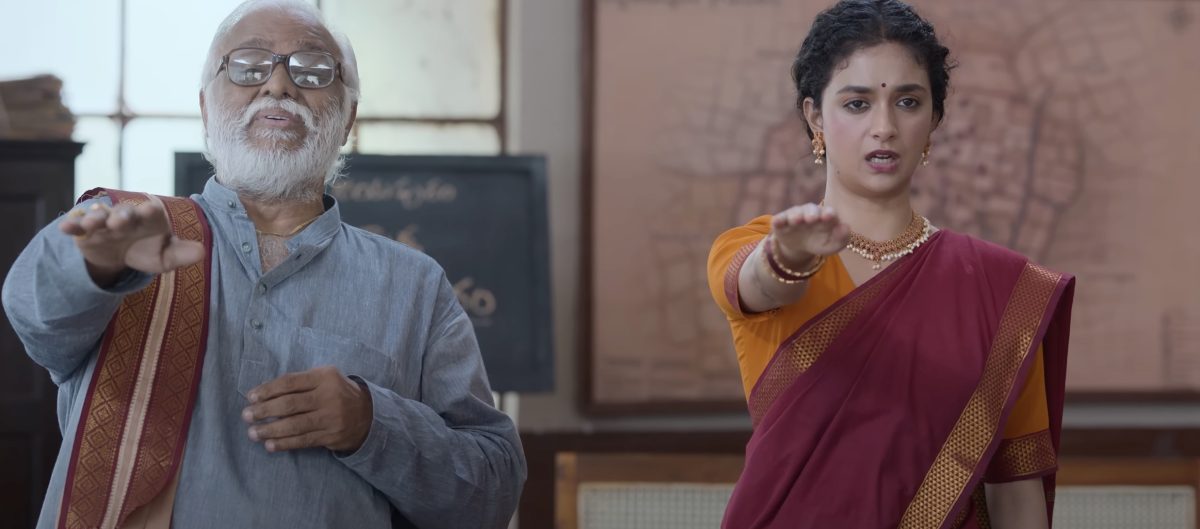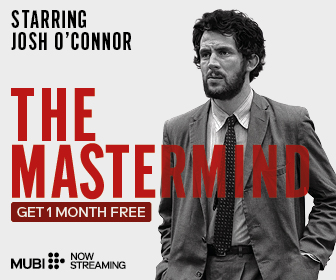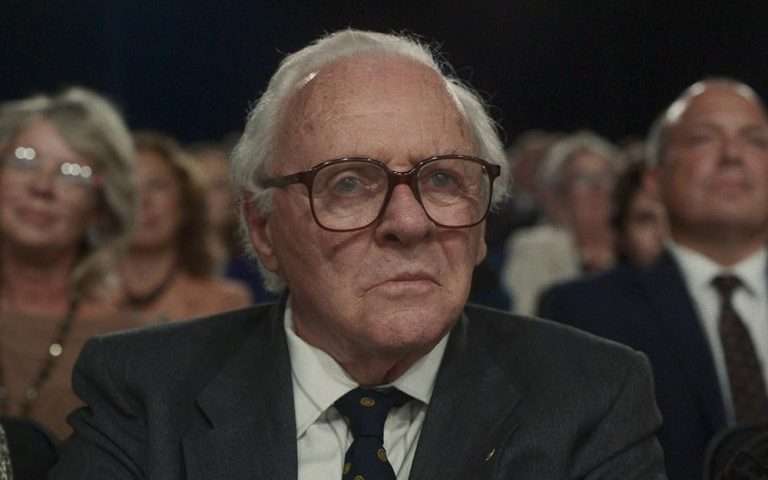There is an endearingly weird quality in how “Uppu Kappurambu” opens. Streaming on Prime Video, director Ani I.V. Sasi’s film dares to aspire to a divergent brand of comedy. Alas, it does not fully embrace that ambitious courage. In spite of a few flashes of individualistic brilliance, the Telugu comedy movie, starring Keerthy Suresh and Suhas, only half-commits to its quirks. It drops the ball on its delicately humorous premise and pulls its punches for a safer, more accessible version of its potential. The result is a passably entertaining comedy that plays with quirkiness, which is bound to be felt like a missed opportunity.
Written by Vasanth Maringanti, “Uppu Kappurambu” has us smack dab in the middle of a zany take on life’s most morbid reality: death. We are in the fictional village ‘Chitti Jayapuram.’ Despite the village’s dominant faith being Hinduism, Chitti Jayapuram has one oddity passed down from the founding fathers of the village. While cremation is the primary method of post-death rite of passage for Hindu families, Chitti Jayapuram residents believe in burial. The tradition, believed to bring good fortune for the village, has one big flaw. Being a small village, its graveyard has started to fill up after 200 years of providing a resting place to the village’s departed souls.
The fact that there are only a few spots, namely four, left to be utilized, is not noticed until the aged village head dies. After burying the dead, Chinna (Suhas), the undertaker and the graveyard’s caretaker, notices the scarcity of burial space. Meanwhile, the village head’s daughter, Apoorva (Keerthy Suresh), is sworn in as the new head. She stumbles and fumbles initially, but quickly overcomes the hindrances while relying on her father’s teachings. However, when Chinna points out the burial problem, she is stumped. Her father did not teach her how to tackle that. Nobody anticipated that.
So Apoorva and Chinna join hands to mitigate the problem. Since cremation is a taboo method for the villagers, Apoorva and Chinna’s quest to solve the problem brings comical challenges, seeped in eccentricity and humor. Starting with having a lottery for the last four spots to ‘reusing’ old graves, “Uppu Kappurambu” has us navigate the weird crevices of morbid humor. Apart from the common goal, Chinna has a personal problem too. His mother is dying, and he needs to ensure she gets a spot in the village. After all, it is her dream to rest in the village land, under the shade of a large tree.

Understandably, screenwriter Maringati and director Sasi attempt to infuse the story with a regular barrage of rural quirks. Some lands, while some don’t. However, the tonal shifts between its nuanced ambition and safely garish execution often come to display. For almost all the well-thought-out idiosyncratically comedic situations created in the story, “Uppu Kappurambu” has a gaudily commercial slapstick rendition as an appendage. I am not asking those renditions to be deadpan, but a little bit of control should have been exercised, considering the humor in the premise has shades of subtlety. The theatrical exaggeration was often out of place.
Keerthy Suresh and Suhas’ combined act forms the heart of the story. Suresh’s committed physical comedy elevates the otherwise ill-fitting slapstick. She makes Village Head Apoorva’s journey from a bumbling fool to an adept problem-solver and leader an appealing watch. Suhas’ lovably simplistic Chinna, on the other hand, is there to endearingly pull the emotional cords. His climactic emotional breakdown highlights what a fine actor he is.
The film’s cinematography and color grading also deserve a special mention. Cinematographer Divakar Mani’s frames of the rural landscape are pleasantly comforting. One would not argue with Chinna’s mother’s adamant request to be buried in the serene terrain. It is through that lens (of course, with input from director Sasi), the graveyard becomes a zany and colorful playground. Not a morbid reminder of life’s finality.
“Uppu Kappurambu” means ‘Salt and Camphor.’ There is an undercurrent of addressing the class division prevalent in Indian societies. One of the villainous characters in the film highlights how salt and camphor are not the same, even though they look the same. One is supposedly held in higher esteem than the other. The film seems to channel the message that death is the great leveler. In death, we are equal. However, noble as it is, this deep exploration comes as an afterthought. That is why an expository, preachy lecture has to be inserted at the climax, which is the perfect example of what “Uppu Kappurambu” largely is. Once again, a missed opportunity.







